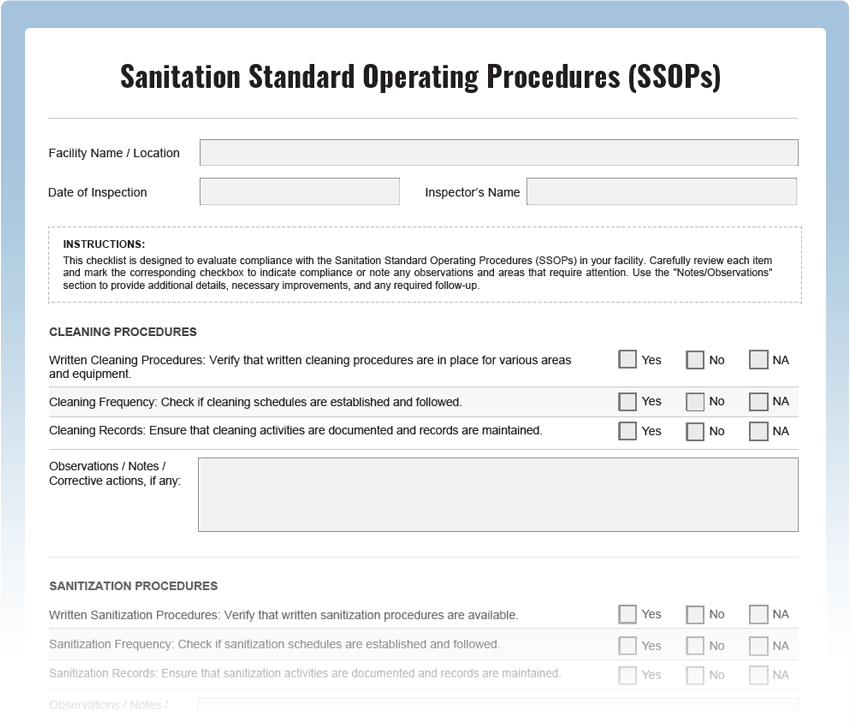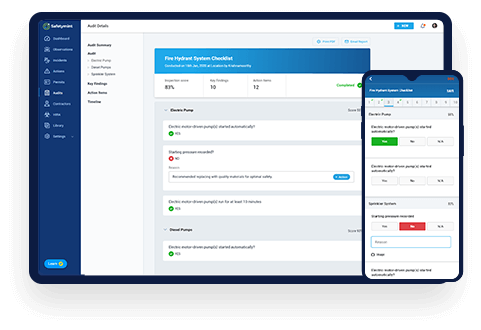SSOPs Audit Checklist
Maintain a hygienic and safe environment in your facility with our comprehensive Sanitation Standard Operating Procedures (SSOPs) Audit Checklist. This free PDF template is designed to evaluate and verify the implementation of SSOPs to ensure proper cleaning and sanitation practices. By conducting regular SSOPs inspections, businesses can prevent contamination, uphold food safety standards, and comply with regulatory requirements.
Digitize this Checklist on Safetymint
- Create unlimited, customized checklists
- Add Actions, with automated reminders
- Works seamlessly with or without internet
- Access via web browsers, mobile or tablets

What is a Sanitation Standard Operating Procedures (SSOPs) Audit?
A Sanitation Standard Operating Procedures (SSOPs) Audit is a systematic tool used to assess the adherence to SSOPs in a facility. It includes a series of checkpoints designed to inspect various aspects of cleaning and sanitation practices, such as equipment cleaning, surface sanitization, pest control, and waste management. Regular SSOPs inspections are crucial for maintaining a clean and sanitary environment, minimizing the risk of foodborne illnesses, and achieving compliance with sanitation regulations.
Key Areas to Inspect in a Sanitation Standard Operating Procedures (SSOPs) Audit:
- Cleaning Procedures: Verify the effectiveness and frequency of cleaning processes.
- Sanitization Practices: Assess the use of appropriate sanitizers and their correct application.
- Equipment Maintenance: Review the condition and cleanliness of production equipment.
- Pest Control Measures: Ensure the implementation of effective pest control practices.
- Waste Disposal: Evaluate proper waste management and disposal procedures.
- Employee Hygiene: Check that staffs adhere to proper personal hygiene practices.
Common Sanitation Standard Operating Procedures (SSOPs) Audit Findings:
Frequent issues found during SSOPs audits include:
- Incomplete Cleaning Records: Insufficient documentation of cleaning and sanitation activities.
- Inadequate Pest Control: Failure to address pest infestations effectively.
- Lack of Training: Employees not adequately trained in SSOPs and sanitation practices.
Sanitation Standard Operating Procedures (SSOPs) Audit Best Practices:
- Routine Inspections: Conduct regular SSOPs inspections to maintain sanitation standards.
- Staff Training: Provide comprehensive training on SSOPs and sanitation protocols.
- Continuous Improvement: Use inspection findings to enhance cleaning and sanitation practices.
- Corrective Actions: Address any identified issues promptly with appropriate corrective actions.




